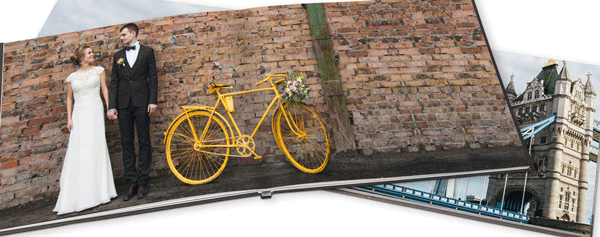It seems the ‘truism’ that young people don’t print photos will need some reassessment if recent research from Futuresource Consulting reflects reality…

The latest figures, released in September, suggest a booming photo printing industry in Western Europe, with photo prints, photo books and photo-merchandise presenting new and growing opportunities. The western European photo printing sector is already estimated to be worth 3.2 billion Euros ($4.8 billion) annually.
‘Digitalisation had previously been held responsible for a decline in photo-printing services, with photo print volumes falling below 50 percent of overall market value,’ commented Jeremy Wills, senior analyst at Futuresource Consulting. ‘The lessening need to use film to capture images – with technology expanding the possibilities for photography through smartphones and other mobile gadgetry – has also been accompanied by growing opportunities to share images digitally, rather than printing them.’
However it seems that the millennial market is rediscovering the joys of physical photography, albeit in a different way to their parents. The opportunity for increased engagement with a printed photograph over a digital copy have (finally!) been noted by younger consumers, it seems they’re increasingly willing to spend their cash on the real thing, providing the opportunity for greatly enhanced profit margins.

Smaller volumes of formats such as square and ‘instant style’ photography sell for over €0.75 ($1.10) per photo, and developments in photo-producing technology reduce the time and effort involved in creating these profitable images and photobooks.
It’s all online
The market tracking report highlights that online orders account for around 95 percent of the 25 million photographic units sold throughout 2016, with repeat customers driving demand for more pages.
The enormous volume of photographs being taken digitally (some 1.7 trillion images will be captured globally through 2017) provides a vast choice of images for customers to choose from and for retailers to transform into photobooks, or photo-merchandise including calendars, cards, wall décor and photo gifts, all popular throughout Western Europe. The value of the photo-merchandise segment grew by 5 percent through 2016, with 90 percent of all orders placed on the internet via PCs, tablets and smartphones.
The growth of online/mobile device ordering presents yet more opportunities for retailers, as once a buyer has customised an image they are far less likely to back out of a purchase decision. It is not yet clear which retailers will emerge victorious in the battle for dominance over the photo-printing industry, but one thing is clear – photographic printing is back in business.
Photo books coming of age
In an earlier Western European Photobook Market Report (July 2017) Futuresource focussed on consumer photobooks and found increased demand has been driven by a combination of higher quality products, direct online sales and innovation from new market players such as Google.
‘The Western European consumer photobook market is in a state of sales volume maturity, yet expected to still marginally grow in the coming years,’ said Jeremy Wills. ‘More than 70 percent of orders were web-to-home and over 22 percent were web-to-retail in 2016 and we expect that figure to keep rising.’
Germany, the Benelux region and France hold close to 65 percent of West Europe’s entire sales volumes of photobooks, but Switzerland was the leading market for online ordering in the region in 2016, where almost all photo books are ordered through an online channel.
New players such as Google are entering the market and driving technological developments, notably applying machine learning on image data sets. Although Google has only launched in the US at the moment, Futuresource anticipates that its presence is likely to energise the marketplace.
‘Although there is no substantial influence of smartphone placed orders yet, new – easy to use – apps are being developed, and are expected to play a significant role in the future. This is partly due to new developments in Artificial Intelligence, facial recognition and curation, which allow resellers to offer ready-to-print photobooks, tailored to the consumer.
 ‘If consumers are offered more timely ways to order photobooks, there is great potential for the industry to sell more of them.’
‘If consumers are offered more timely ways to order photobooks, there is great potential for the industry to sell more of them.’
The improving resolution of smartphone cameras in recent years has started to provide images of high enough quality to print into larger photo products such as photobooks, which is boosting average retail prices.





Be First to Comment